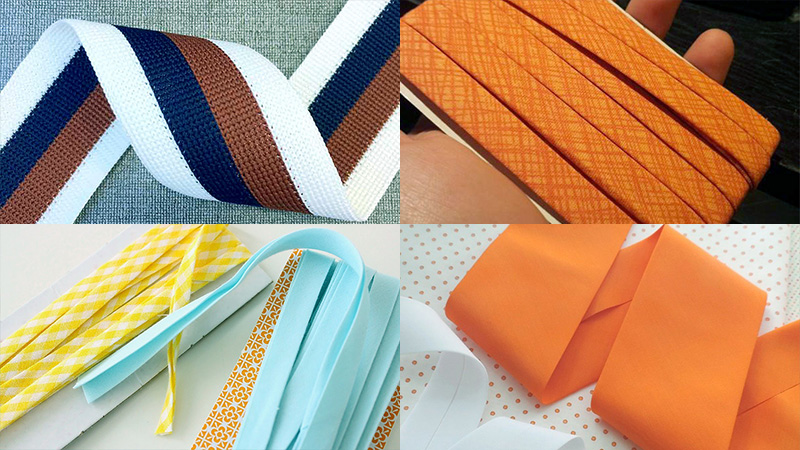
A versatile and indispensable tool in the realm of sewing and crafting. Bias tape, with its unique properties, opens up a realm of possibilities for adding functionality and aesthetics to your projects.
In this comprehensive guide, we will explore the diverse types of bias tape available, each tailored for specific applications. From single-fold to double-fold, quilt binding to fusible options, you’ll discover how to choose the right bias tape for your needs.
We’ll also delve into materials, tips for working with bias tape, and creative applications that elevate your sewing endeavors. Let’s unravel the tapestry of possibilities!.
1. Single Fold Bias Tape
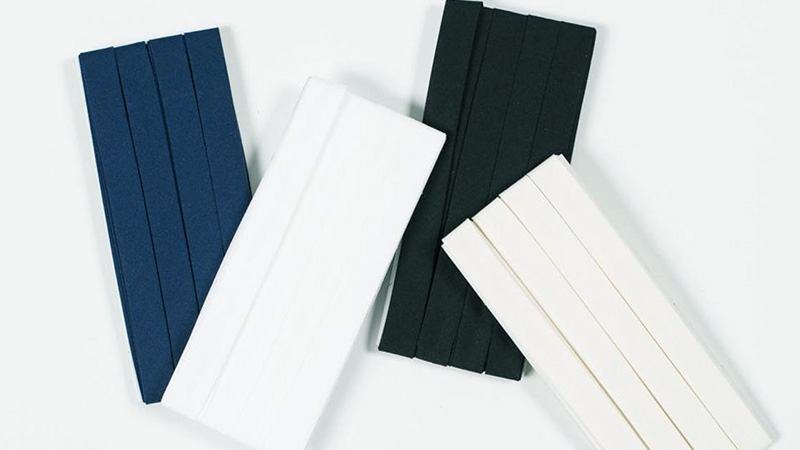
Single-fold bias tape is a versatile sewing notion, typically cut on the bias from fabric strips and folded in half, with both edges neatly enclosed.
This creates a flexible, narrow trim that is perfect for finishing raw fabric edges, creating subtle hems, or adding a clean, polished edge to various sewing projects.
Single-fold bias tape is especially useful for lightweight and delicate fabrics, providing a neat finish while preventing fraying. It’s an essential tool in a seamstress’s kit, offering a professional touch to clothing, quilts, and craft projects.
Its simplicity and utility make it a go-to option for both beginners and experienced sewers.
2. Double Fold Bias Tape
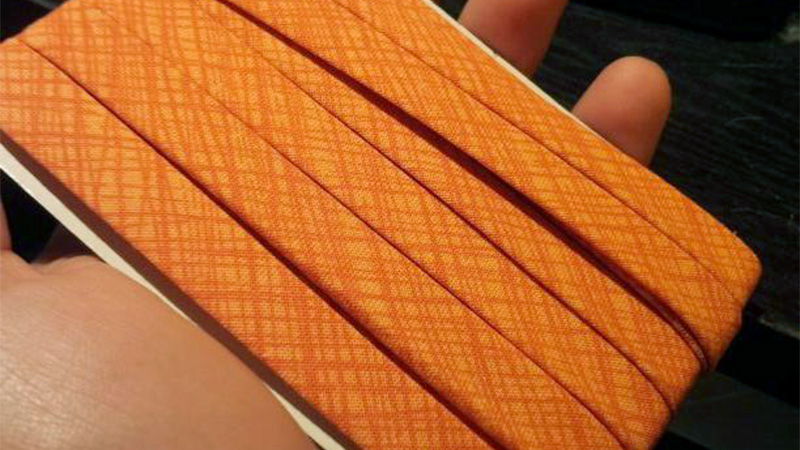
Double-fold bias tape, a crucial sewing notion, begins as a strip of fabric cut on the bias, which is then folded in half, encasing both raw edges within.
This versatile trim serves multiple purposes in sewing, enabling clean, durable finishes on seams, hems, and edges. Its added strength makes it suitable for a broader range of fabrics, including medium to heavyweight materials and quilting projects.
Double-fold bias tape provides a polished appearance, concealing raw edges while adding structural integrity. It’s a staple for quilters, seamstresses, and crafters seeking a tidy, professional finish and is available in various widths and colors to suit diverse projects.
3. Non-folded Bias Tape
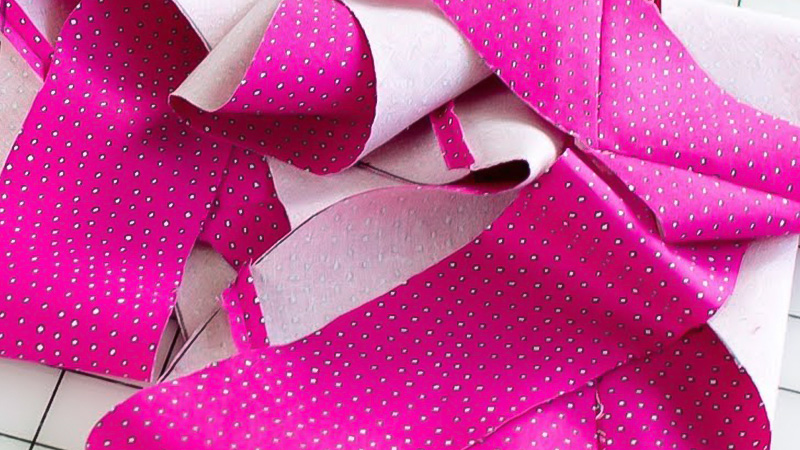
Non-folded bias tape, also known as flat bias tape, is a simple yet practical alternative to the traditional folded bias tape. Unlike folded bias tape, it doesn’t have the characteristic folds that encase the raw edges.
Instead, it is a flat strip of fabric cut on the bias. Non-folded bias tape is often used for applications where you want the tape to lie flat, such as reinforcing seams, adding a pop of color, or creating a clean edge finish without extra bulk.
It’s particularly useful when you need a low-profile trim or when working with fabrics that are too thick for folded bias tape.
4. Fusible Bias Tape
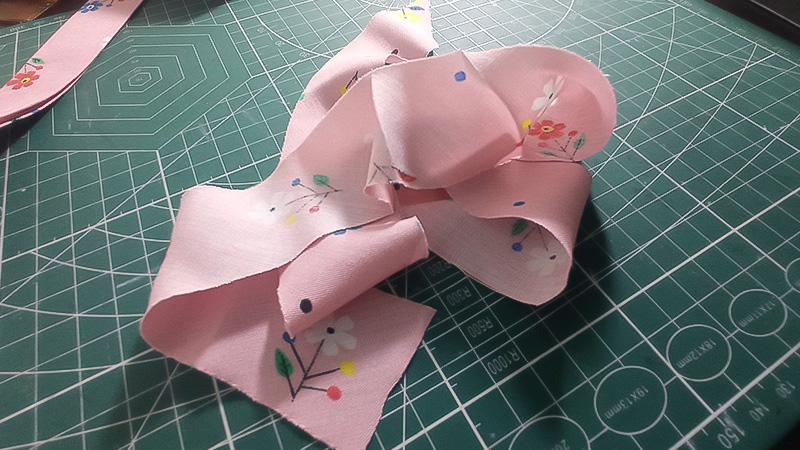
Fusible bias tape is a time-saving variation of traditional bias tape that simplifies the process of binding edges or finishing seams. It is constructed with a heat-activated adhesive on one side, allowing it to adhere to fabric when subjected to heat, typically through ironing.
This eliminates the need for sewing to secure the tape in place. Fusible bias tape is convenient for various projects, especially when you desire a quick and secure finish, such as when adding decorative trims, reinforcing seams, or binding quilts.
It provides a strong bond, making it a valuable tool for both beginners and experienced sewers.
5. Blanket Types of Bias Tape
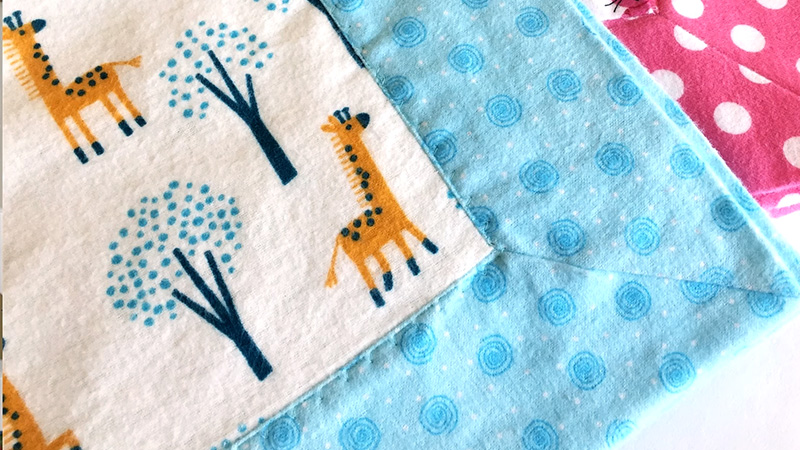
Blanket binding bias tape is a specialized type of bias tape designed explicitly for finishing the edges of blankets. It features a double-fold design, with both raw edges folded inward, creating a clean and durable border.
This type of bias tape is wider and more robust than standard bias tape, making it suitable for the thicker fabric of blankets. It not only adds a polished appearance to the blanket’s edges but also reinforces them, preventing fraying and wear over time.
Blanket binding bias tape is available in various colors and materials, allowing you to choose options that complement or contrast with your blanket design.
6. Continuous Bias Tape
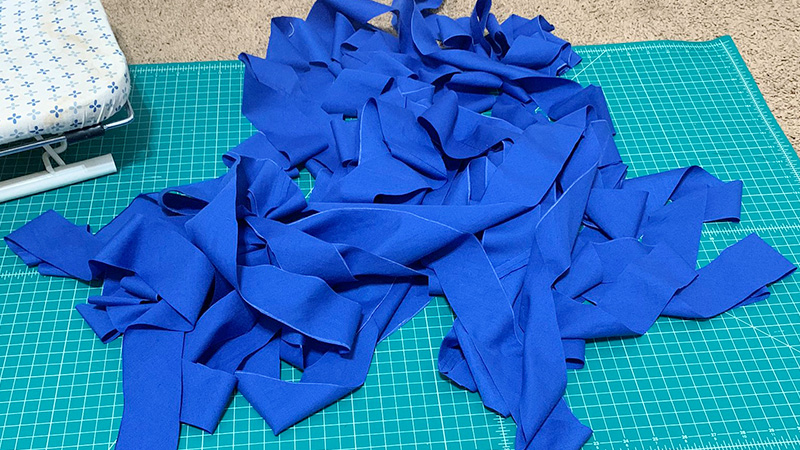
Continuous bias tape, a sewing technique and notion, allows crafters to create an unending length of bias tape from a single, continuous strip of fabric.
This method minimizes fabric waste and offers versatility in terms of size and color. To make continuous bias tape, a square or rectangular piece of fabric is skillfully manipulated into a seamless, folded strip.
This unique tape can be custom-sized for various projects and is particularly useful for quilting, edging, or binding. Its adaptability and efficiency make it a favorite among quilters and crafters, offering both cost-effective and eco-friendly benefits in sewing and fabric manipulation.
7. Diy Types of Bias Tape
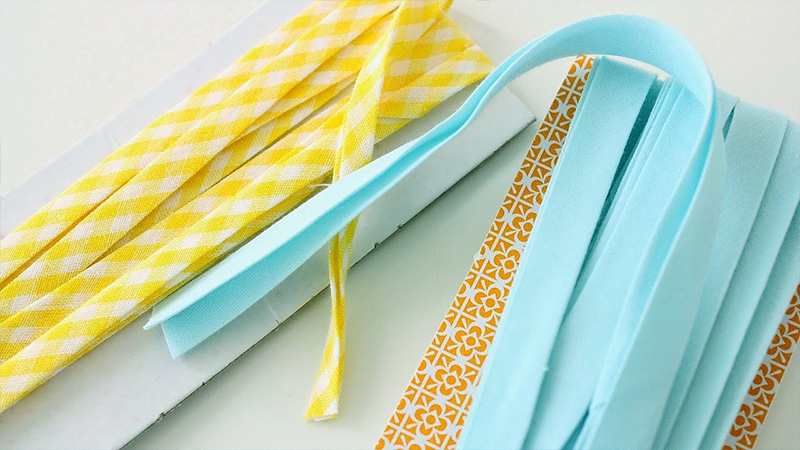
DIY bias tape is a creative and cost-effective approach to customizing your sewing projects. To make your own bias tape, cut fabric strips on the bias (diagonally across the grain) and then fold and press them in a single or double-fold manner to create the desired width and finish.
This allows you to match your bias tape perfectly to your project’s color and pattern, making it ideal for personalized and unique creations. DIY bias tape offers a level of customization and creativity that can’t be achieved with pre-made options, making it a popular choice for crafters and sewers looking to add a personal touch to their work.
8. Wide Bias Tape
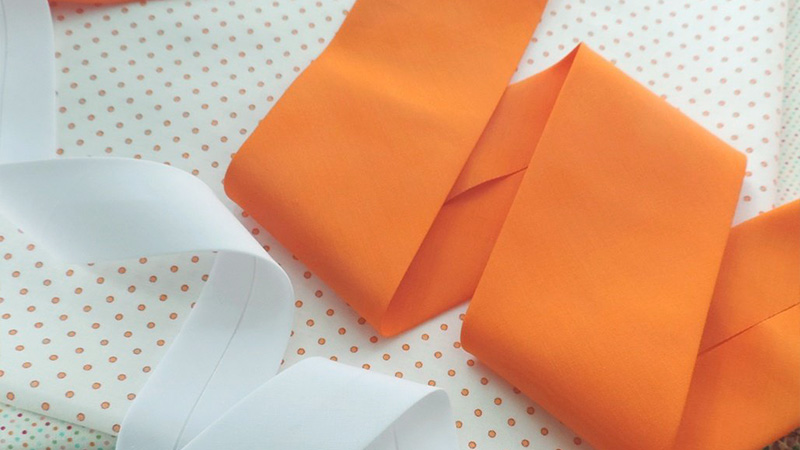
Wide bias tape is a broader version of traditional bias tape, offering greater versatility and impact in sewing and craft projects. With its expanded width, typically ranging from 1 inch (2.54 cm) or more, wide bias tape is ideal for making bold, decorative trims, adding striking edges to garments, or enhancing home decor items.
It provides a visually appealing border and can be used for various creative applications, from highlighting seams to embellishing bags, pillowcases, and clothing.
Wide bias tape comes in various colors, patterns, and materials, making it a favorite choice for those seeking to infuse their projects with style and flair.
9. Knit Bias Tape
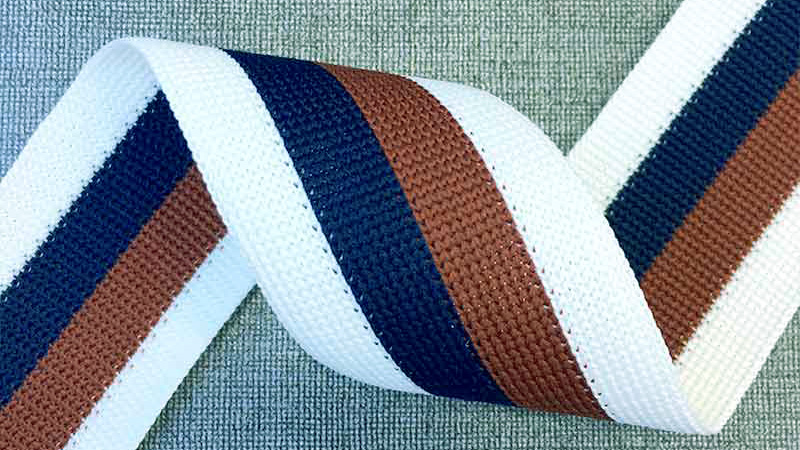
Knit bias tape is a specialized type of bias tape designed for use with stretchy or knit fabrics. Unlike traditional bias tape, which is made from woven materials, knit bias tape is crafted from stretchy knit fabric.
This elasticity allows it to move with the fabric it’s applied to, making it ideal for finishing edges, hems, or bindings on garments made from knit materials.
Knit bias tape offers a neat and flexible finish, accommodating the stretch and movement of the fabric. It’s a valuable tool for sewers working with knit fabrics, ensuring that their creations maintain both comfort and durability, even with frequent stretching.
Conclusion
Bias tape is a remarkable tool that empowers crafters and sewers to achieve clean, polished, and professional finishes in their projects. Throughout this guide, we’ve explored the wide array of bias tape types, each designed to cater to distinct needs and creative preferences.
Whether you seek the simplicity of single-fold tape, the durability of double-fold, or the convenience of fusible options, bias tape offers versatility and functionality like no other sewing notion.
By mastering the art of bias tape selection and application, you can elevate your sewing and crafting endeavors, adding a touch of personalization and finesse to every creation.
So, next time you embark on a sewing journey, remember the boundless potential that bias tape brings to your fingertips, and let your creativity flourish!.
Leave a Reply